Are your favourite foods at risk of extinction?
Weâre used to having the pick of the worldâs produce in our shops, but what if our favourite ingredients were to become scarce? Two in five of the worldâs plants are at risk of extinction, says a new report by The Royal Botanic Gardens, Kew, with important consequences for our food.
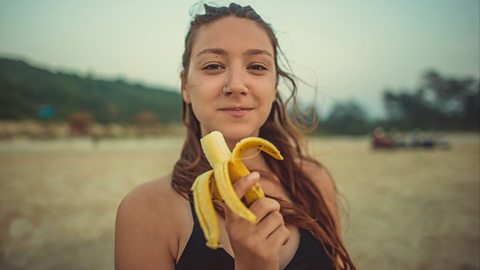
by Hattie Ellis
We eat a relatively small number of foods, with just 15 plants providing 90 percent of the worldâs calories, even though there are more than 7,000 edible plant species. Whatâs more, farming tends to concentrate on just a few commercial varieties.
You may think we donât need to worry about the supplies of foods we eat little of, or of those that are plentiful. But all plants are part of an eco-system, and as habitats disappear â largely due to farming â or come under pressure through climate change, it can be difficult to predict what effect this will have on food security.
Concerns about some of our most popular ingredients highlight a number of pressing environmental issues. And the solutions being sought to these problems show the ways forward.
Wheat: staple food at risk from climate change?
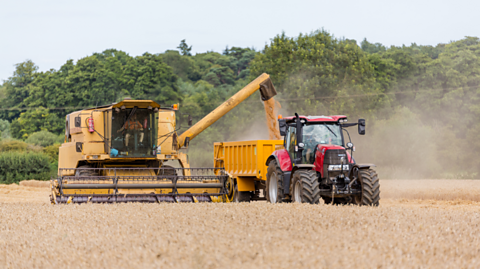
Wheat is the most important cereal crop for the UK, filling our shelves with flour, bread, pasta and other staple foods. But the wetter, warmer, wilder, weirder weather patterns of climate change are making life much more difficult for farmers.
This yearâs UK wheat harvest was down by nearly 18 percent. Thatâs because last yearâs very wet autumn made it hard for farmers to get the seeds in the ground, and spring 2020 was exceptionally dry, so crops planted in the early spring lacked rain. On top of all this, heavy rain disrupted this yearâs autumn harvest.
âItâs very clear weâre getting more extreme events more frequently, and thatâs because of climate changeâ, says cereal farmer and NFU Deputy President Stuart Roberts. âItâs giving us some challenges: more droughts, more floods, and weâre [farmers] at the forefront at facing into those .
Wheat will remain the UKâs mainstay, but Roberts says farmers are having to change what they do, for example growing wheat in rotation with other crops and looking at different types of plant protein such as beans, peas and soya, all foods that play a part in a healthy diet.
In less affluent countries, the uncertainty of crop harvests is more likely to lead to political unrest and thereâs also the issue of disease and hunger. Around the world, four billion people rely on three main crops: rice, maize and wheat. âA major pest could wipe these outâ, warned Environment Minister Zac Goldsmith in a recent seminar on Kewâs . âWe need to have resilience and sustainability.â
What can you do? Vary your diet more to enjoy the full range of whatâs available in terms of breads and grains, and get into beans and other pulses such as lentils to encourage the growth of different types of plant protein such as beans, peas and soya, all foods that play a part in a healthy diet.
Bananas: UKâs most popular fruit at risk from disease?
We each eat on average 100 bananas a year, but the worldâs export market is based on just one species, the Cavendish banana. This is suffering, increasingly, from the devastating Panama fungal disease.
Weâve been here before. The Gros Michel or âBig Mikeâ banana used to be the commercial mainstay â apparently it tasted more âbanana-eryâ and a bit like banana milkshake â but this was wiped out by the same disease in the 1950s. The deadly fungus is still here, now spreading to wild bananas, and it also affects another staple food, plantain.
The solution could lie in Kewâs Millennium , the worldâs largest collection of wild seeds. Thatâs because Kewâs partners in Vietnam and Malaysia have been collecting seeds from some of the worldâs 80 wild banana species, which are kept in the seed bank and sent to plant breeders to develop new more disease-resistant varieties.
âAll the foods we eat have been domesticated and grown for yield, size, shape and colour, but by doing that youâve taken out some of the important traits that allow plants to respond to climatic changes and other stressesâ, explains Dr Chris Cockel of Kewâs . âThe wild relatives of our domesticated crops are out there surviving without pampering and have more resilience.â
What can you do? One of the issues of modern food is that we rely on too few types and varieties, not least when it comes to fruit and our love of bananas. The UK has the right climate to grow excellent apples and pears, for example, with different kinds available if you look out for them, and even out of season there are plenty of frozen berries that have been picked at their peak and are often good value for money.
Honey: are bees going hungry?
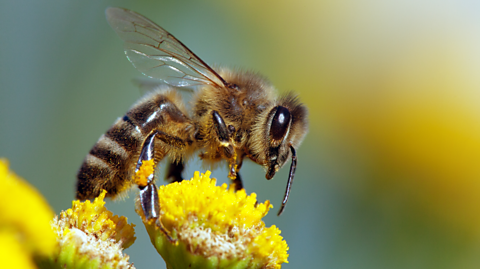
Bees may be small, but their importance to our plate is big. One in three of our food plants relies on pollination by insects to reproduce, according to the Food and Agricultural Organisation of the United Nations, and bees play a key part.
Yet an estimated one in ten insects is in danger of extinction, and honeybees hit the headlines over Colony Collapse Disorder (the rapid loss of the adult bee population) in the United States. The film showed plants having to be hand-pollinated in China because the bees had disappeared.
Lack of food is a major issue for all bees, including honeybees, according to Sarah Wyndham Lewis, of Bermondsey Street Bees, a UK sustainable beekeeping company, and author of Planting for Honeybees. âHunger stands at the top of the tree as a primary problem, greatly amplifying the effect of a multitude of other environmental issues impacting all bee populationsâ, she says. âLack of forage, due to agricultural monocultures [growing the same crop on a piece of land year after year], loss of habitat and urban hive overcrowding, weakens insectsâ immune systems, making them far less able to withstand other major stresses, including pesticides, parasites and bee diseases.â
Yet despite this poor health, the number of beehives worldwide continues to rise (currently 92 million), as sick and dead honeybees can be replaced by breeding more of them. A twist to the tale is that hungry honeybees can themselves , including the wild pollinators that are a vital part of the natural world.
What can you do? The answer is to protect and encourage different kinds of habitat and to grow bee-friendly plants in your garden. It is also for beekeepers to place beehives thoughtfully, avoiding areas where pollinator diversity is already challenged. In the shops, look for honey that doesnât have the word âblendedâ on the label. This means it comes from a particular beekeeper, who is more likely to care about the individual character of a place rather than just producing a commodity.
Cocoa: could drought and global warming decimate the harvest?
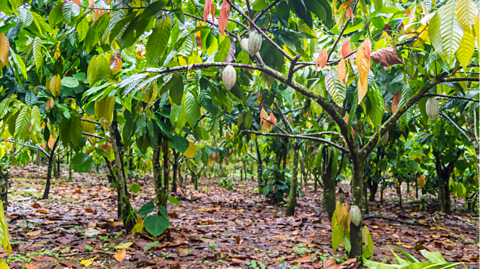
Global warming is especially worrying for tropical crops, not least the cocoa trees that are the source of our chocolate. A drier, less moist environment will make cocoa farming impossible in some of West Africaâs production areas (source of 70 percent of the worldâs chocolate) unless farmers adopt more sustainable methods, according to the .
One of the biggest concerns is changes in rainfall, says Bill Guyton, Executive Director of the Fine Chocolate Industry Association (FCIA) and founder of the World Cocoa Foundation. âSince nearly all cocoa is rain-fed, even modest disruptions in weather patterns impact the production and harvest seasonsâ, he says.
Furthermore, monocropping is common, leading to soil degradation and even greater vulnerability to drought and risk of harvest failure.
More sustainable cocoa production is developing around the world as the big producers wake up to the problem, and is especially strong through the craft chocolate sector, now estimated to be 10-12 percent of the market. âFine chocolate companies promote agroforestry [agriculture incorporating the cultivation of trees and shrubs] practices, which can help protect fragile soils and provide shade cover for cocoaâ, says Bill Guyton. This must be done carefully to allow sufficient sunlight for tree development, while keeping the temperatures cooler and providing enough moisture for the best growing conditions.
What can you do? UK chocolate expert Chantal Coady says that a mixed rainforest growing situation works well for sustainability and organic production, for example, meaning the producers have to pay attention to soil fertility. Bean-to-bar producers, who are engaged in the whole process of making chocolate, tend to operate on a smaller scale and pay more attention to the source of their cocoa. Look out for organic chocolate â it isnât always as expensive as you might think.
Tuna: could we run out of stocks?
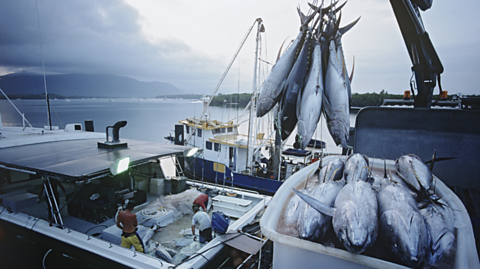
Nearly 94 percent of global fish stocks are either fully or overexploited, according to the UNâs most recent . Skipjack (the one we usually buy in tins) and yellowfin tuna are two of the worldâs top 10 fished species and we need to take care not to catch too many.
The Blue Marine Foundation (BLUE) recently highlighted the , but there are issues around the world. Atlantic bluefin tuna, yellowfin tuna and bigeye tuna are all decreasing in number, raising serious concerns for the future of healthy stocks.
Skipjack tuna is thought to be more resilient because it is smaller and breeds faster. But whilst species and location matter, the type of fishing is also important, even with skipjack. The common method of purse-seine netting can catch yellowfin tuna that are too young to reproduce and sustain the population. âPole and line is generally a better method because itâs semi-artisanal and, like handline fishing, the fish are caught one by oneâ, says Jess Rattle of BLUE. âBut when the stock is in trouble thereâs no way of fishing thatâs all goodâ, she warns.
There are also intrinsic problems of eating large fish such as tuna. âWeâre eating these big fish that are predators and that has unknown effects on whatâs below them in the food chainâ, says Rattle.
What can you do? You can find out more details on particular fisheries in the Marine Conservation Societyâs and by looking on a tin or packet of tuna for details of origin and sustainability. Sales of tinned tuna soared during lockdown, and even though skipjack is less at risk than other species of tuna, itâs a good idea to switch to smaller fish such as mackerel and tinned sardines, or try other types of fish, caught in British waters. was set during the first lockdown to connect consumers to British fish suppliers, who can deliver fresh fish to your door and help with how to eat underappreciated and less expensive types.
What can we do?
Many environmental issues point to the importance of eating a varied diet and the benefits of sustainable agriculture and fishing. Our default tends to be to eat the same things week after week, but often you can replace these with alternatives that are just as cheap or more so. Small shifts in your overall diet, for example eating more plant-based proteins and less fish and meat, help to keep costs low.
To keep our favourite ingredients safe, the whole environment matters, not just farms, as different habitats contain the wild relatives of the commercial crops we eat, and many other plants that could be useful to us in the future. âItâs a treasure chestâ, says Professor Antonelli, Kewâs Director of Science, but one that we are losing, he warns, because of the destruction of natural places and their web of inter-connections between plants, insects and animals.
Ultimately, we rely on the natural world to produce our food. David Attenboroughâs ģÉČËŋėĘÖ programme Extinction: The Facts is clear about how the risks to our planet affect our daily lives. âEverythingâs joined up, from a single pond to tropical rainforestâ, he says. âWe think weâre outside of it, but weâre part of it and reliant on it.â
The need to farm and eat sustainably is becoming a necessity as environmental issues grow. The shift in thinking is towards eating what the planet can produce, not just what we demand. From this different standpoint, we can keep our food supplies safe through what we put into our shopping baskets and serve up for supper.